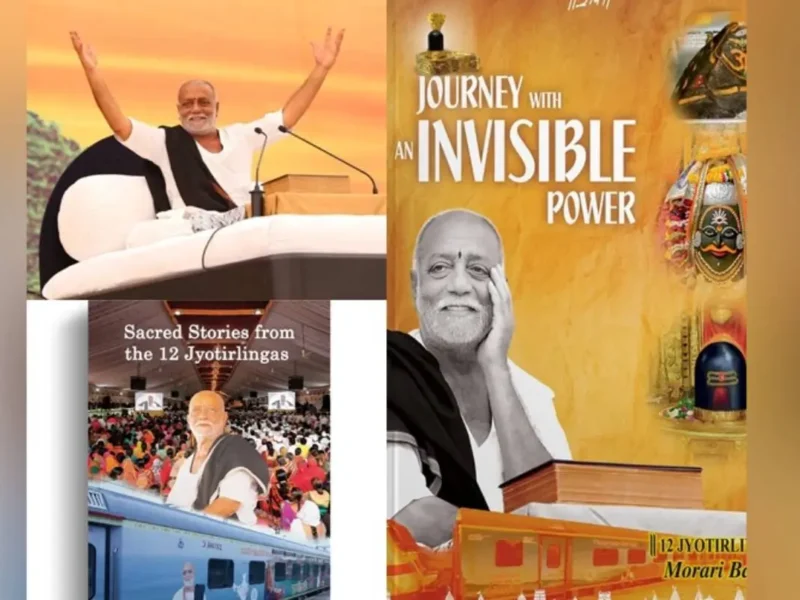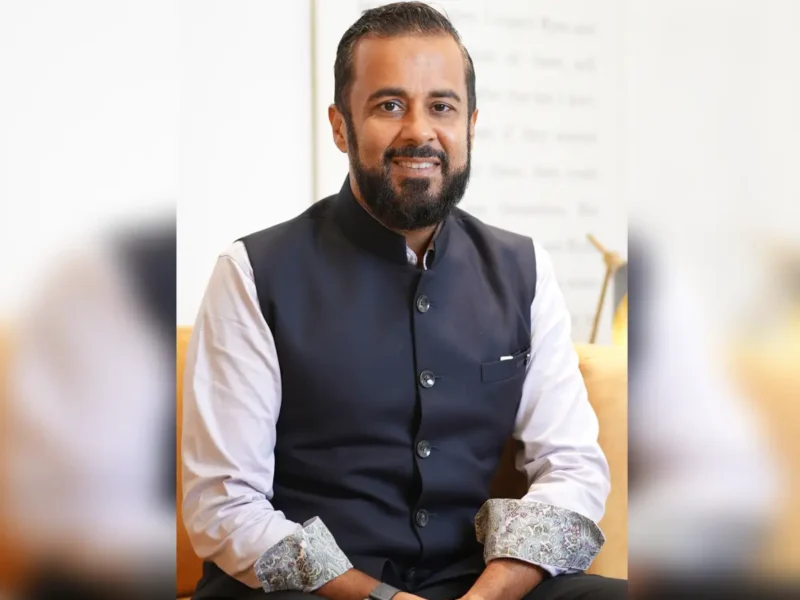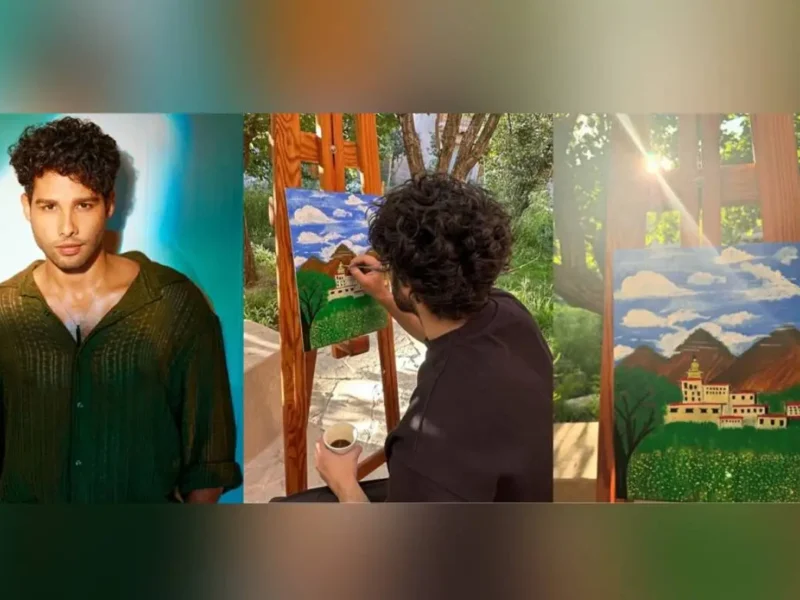
Book Extract: The Greatness Of Abdul Kalam, Sarabhai’s Vision
NEW DELHI, (IANS) – In a riveting autobiography studded with anecdotes from his crowded life at the Indian Space Research Organization, G. Madhavan Nair, presents rich insights, blending the personal with the historical, into the milestone moments in the history of space research in India, from the visionary days of Pandit Nehru, Homi J. Bhabha and Vikram Sarabhai to the present, with some memorable stories about the human side of Dr A.P.J. Abdul Kalam.
In these excerpts from ‘Rocketing Through The Skies: An Eventful Life at ISRO’, Rupa, Rs 795, Madhavan Nair remembers November 14, 2008, when the Moon Impact Probe was launched successfully by Chandrayaan-1 and how Dr. Kalam, who had first floated the idea of India’s mission to the Moon on the day when Neil Armstrong set foot on it in 1969, named the landing spot ‘Jawahar Sthal’:
The Moon has enthralled humankind from time immemorial. Poets have compared it with the beautiful faces of women. The Puranas have revered it as a god, a deva. Any new knowledge about the Moon has always been important for us earthlings. In that spirit, when the whole of India was waiting with bated breath for news about the progress of Chandrayaan-1, ISRO declared to the nation that its maiden attempt to take the spacecraft to a precise orbit around the Moon was a complete success.
Chandrayaan-1 carried a module called Moon Impact Probe (MIP), which was to be put on the surface of the Moon as proof of India’s arrival.
The module had the Indian tricolor inscribed on it and contained a high-resolution mass spectrometer, a video camera, and an S-band altimeter, among other instruments, for uncovering hitherto unknown details about the tenuous atmosphere of the Moon.
At last, the D-day for the MIP to touch the Moon’s surface dawned: November 14, 2008. Like every day, I reached my office at the ISRO headquarters (HQ) in Bengaluru at 9.00 a.m. After some urgent meetings regarding future activities, I reached the special set-up control center in Peenya, Bengaluru, which oversaw the mission operations of Chandrayaan-1. …
An hour before the MIP was to be detached from the Chandrayaan-1 spacecraft, Dr A.P.J. Abdul Kalam, former president of India and my guru, strode into the control room flashing his trademark smile. He had not been able to come to Sriharikota for the launch of Chandrayaan-1 but kept his word to be with us to witness the landing of the MIP on the surface of the Moon.
I arranged spiced buttermilk — his favorite — for him and explained the details of the mission. He went around the newly built control room and appreciated the internal architecture as well as the sophisticated instrumentation. The control room was as big as a tennis court and as high as a two-storied building, fitted with the latest facilities.
A giant display screen on the wall continuously showed the status of each of the instruments aboard Chandrayaan-1. The schedule of the upcoming operations was being projected on another screen. More than a hundred computers and an equal number of scientists were engrossed in work all around the room.
Professor U.R. Rao, former chairman of ISRO, also joined us.
Maintaining communications with the spacecraft at the distance of the Moon is indeed a very challenging task. A giant dish antenna with a diameter of 30m and a very sensitive receiver had been set up to capture the weak signals arriving from 400,000 km. Using completely home-grown technology, the receiving center was able to accurately follow the spacecraft to collect data from it and relay it to the mission control center in Peenya within seconds.
Dr Kalam was excited to see the most modern set-up and remarked that he felt as if he was in a wonderland!
At exactly six minutes past 8.00 p.m., the command to initiate the Moon impact sequence was transmitted to Chandrayaan-1. As the command was executed by the spacecraft, the MIP was severed from the mother craft. The final journey of the MIP started from an altitude of 200 km above the Moon. The speed of the MIP had to be reduced so that it descended to the lunar surface by gravitational pull.
To commence the free fall, the velocity of the MIP was reduced by firing the small solid rocket attached to it. As we looked anxiously at the screens in the control room, the MIP descended on the Moon and finally impacted at a spot near the pole, beside the Shackleton crater. The Indian flag on the MIP inscribed India’s presence on the Moon forever, heralding the nation’s entry into the elite club of the countries that had earlier placed national flags on the Moon (the USA, Russia, and China).
Thus, the dream mission, announced on Independence Day, 15 August 2003, by the then Prime Minister Atal Bihari Vajpayee, became a reality five years later, on 14 November, the birthday of the first prime minister of India, Pandit Jawaharlal Nehru. It was heartening that this historic moment was witnessed by Dr Kalam, who had originally put forth the idea that India must also place its flag on the Moon. We joined in the joyous uproar of hundreds of scientists in the control center.
… An Indian spacecraft had reached the Moon in its first attempt, that too at one-fifth the expense usually incurred by the developed countries! All the payloads in the spacecraft had been made operational, including the six payloads from other countries. Volumes of data had been received and provided valuable information about the Moon.
… I presented Dr Kalam with a model of the Moon with the exact landing place of MIP marked on it and another of the Chandrayaan-1 spacecraft. He patted me on the back and said in his characteristic style: “You, buddy, you have done it!” To the entire control room, he announced, “Today is a historic day as India has accomplished this fantastic mission. I congratulate each one of you!”
He suggested before returning to New Delhi — to name the impact location after Pandit Nehru. This declaration was made later with the permission of the Government of India and the place was christened ‘Jawahar Sthal’.
Thumba
The love for Kerala and the search for a suitable place near the Earth’s magnetic equator had brought Dr Vikram Sarabhai to Thumba. The scientists of the INCOSPAR (Indian National Committee for Space Research) were searching for such a location in India.
The line connecting the magnetic poles of the Earth is inclined at an angle of 8 degrees with the Earth’s axis and, hence, to that extent, the plane of the magnetic equator is inclined to the geographic equator at 8 degrees too. Above this magnetic equator, at an altitude of 80-150 km, there is a belt of electrically charged particles around the Earth, and the flow of electrons from the west to east is called EEJ, a phenomenon of great interest to scientists.
Since balloons cannot reach beyond 30 km in the sky, small rockets are launched to cut across the electrojet to study its characteristics. Such rockets that carry instruments collecting data from the upper atmosphere are called sounding rockets and need to be launched from places near the magnetic equator.
Noted Malayali meteorologist Professor P.R. Pisharoty, along with Professor Eknath Vasant Chitnis, had scanned different places in Kerala for a suitable location. They soon found two possibilities — Vellanaathuruthu in Kollam District and Thumba in Thiruvananthapuram. The first was closer to the magnetic equator and more suitable for the purpose. Thumba is half a degree away to the south, and, in addition, there were some religious and social challenges to be addressed.
But the name ‘Vellanaathuruthu’ posed an issue. Professor Pisharoty had translated ‘Vellana’ into English for Dr Sarabhai, explaining that the word meant ‘white elephant’, a phrase indicating an edifice of no use.
Dr Sarabhai, being the proponent of professionalism, did not want his premier space venture to carry such a name. Additionally, Thumba was closer to Thiruvananthapuram, where logistics and more connectivity were available. He took the decision to establish the launch station in Thumba.
Dr.Sarabhai & The Nehruvian Vision
Dr Sarabhai, undoubtedly the soul of the organization, began the proceedings with a detailed speech describing all the milestones in seeding Indian efforts towards space research. A Centaure rocket had been launched from Thumba on that day.
Though I was busy because of that launch, the highlights of Dr Sarabhai’s speech are still etched in my mind. He started with reminiscences about the great contributions made by Pandit Nehru and Dr Bhabha towards the development of science and technology in India. Then he dwelt upon the criticisms raised in India against efforts in atomic energy and space. Since we continue to hear those arguments even today, the following words of Dr Sarabhai on the topic are still relevant:
There are some who question the relevance of space activities for a developing nation. To us there is no ambiguity of purpose.
We do not have the fantasy of competing with the economically advanced nations in explorations of the Moon or the planets or manned space flights. But we are convinced that if we are to play a meaningful role nationally and in the comity of nations, then we must be second to none in the application of advanced technology to solve the real problems of man and society in our country.
And we should note that the application of sophisticated technologies and methods of analysis to our problems is not to be confused with embarking on grandiose schemes, whose primary impact is for show rather than for progress measured in hard economic and societal terms.
The Greatness Of Abdul Kalam
… if any team member had a personal or family emergency, Dr Kalam would be the first to pitch in to solve it. Most of us have had such experiences.
I can never forget what happened when my elder son Dileepan was just a year old. It was the end of 1969 or the beginning of 1970. I was in the lab busy with some project work. A phone call came from home to Dr Kalam’s office saying that my son was ill. He had been having fits and had to be taken to the hospital immediately.
Later in the evening, Dr Kalam told me, “Madhavan, Dileep was not well. We did whatever was needed. Now he is okay.” I realized that Dr Kalam had not informed me as soon as the message came! Feeling distraught and a little piqued, I rushed to the hospital. My son was indeed better.
Afterwards, I came to know the care with which Dr Kalam had handled the situation. As soon as he got the message, he sent the administrative officer to my house and made all necessary arrangements to take Dileepan to the hospital. He also called the hospital superintendent and ensured prompt attention.
Dr Kalam then visited the hospital, saw my son, and reassured Radha. When I came to know all this, whatever little resentment I had in my mind simply vanished.
Dr Kalam understood the demands of family life even though he himself was a bachelor. We see this when we read a poem written by him later, after the successful experimental flight of the Agni missile. In the poem, he asks who crafted the Agni success and states that it is in fact the wives and mothers of the team members.
Dr Kalam was 10 years older than me, and for me, he was nothing less than an elder brother.
In contrast to many other scientists, Dr Kalam had been educated and trained in India and not in institutions abroad. But his hard work, focus on goals and exemplary management qualities put him a step ahead of the others. He was a real workaholic. He used to avoid the topic of his marriage. Several suggestions would come from his family and friends, but he would somehow find his way out of those discussions.
Once, the matter reached the stage of meeting a girl and her family. But Dr Kalam’s sister-in-law, who was to accompany him, became unwell, and the meeting had to be postponed. The next time it was scheduled, it coincided with one of the launch events, and Kalam opted to stay and work. The matter could not be taken up again as Dr Kalam simply refused to go for any such meetings. …
One day, Dr Kalam’s elder brother came to Thiruvananthapuram to meet him. Once he arrived in the office jeep, Dr Kalam took him to the mess for lunch and promptly sent him back. He then insisted on paying the charges for the jeep and the lunch.
That was the kind of person he was! There was no change in him even when he became the President of India.




